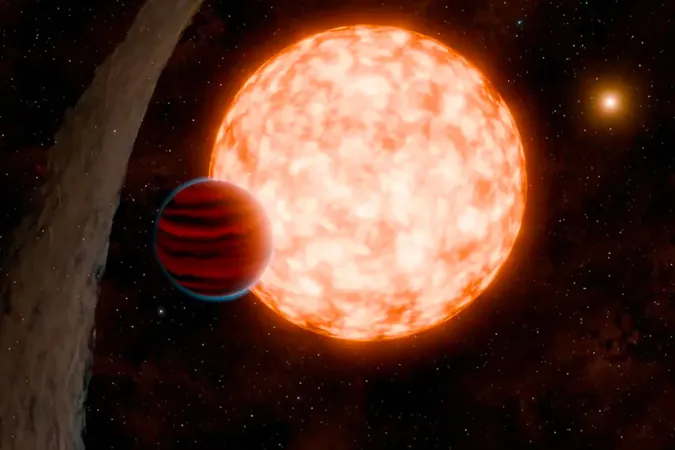
Astronomers Discover a Stunning Newborn Exoplanet: What This Means for Planetary Science
2025-01-06
Author: Yan
The Journey of Discovering the Youngest Transiting Planet
The discovery journey was spearheaded by Madyson Barber, a dedicated graduate student from the University of North Carolina at Chapel Hill. Remarkably, this marks her third exoplanet discovery, with this one being recognized as the youngest transiting planet ever identified. The detection occurred during a transit event—an event where the newly found planet passes directly between its star and Earth, causing noticeable dips in the star’s brightness.
Barber expressed her enthusiasm, stating, “This is definitely our biggest one because it’s the youngest transiting system.” Discoveries like this not only refine our understanding of planetary timelines but also enhance our insight into how planets like Earth may form.
Meet IRAS 04125+2902 b: A Unique Galactic Gem
The newly discovered exoplanet, dubbed IRAS 04125+2902 b, or TIDYE-1b for short, orbits a star that is on track to evolve into an orange dwarf, located roughly 520 light-years from our planet. It completes its orbit in just 8.8 days and, in terms of mass, falls somewhere between Earth and Neptune, boasting a diameter approximately 11 times that of Earth—an impressive size for its youth.
Young exoplanets are notoriously challenging to detect due to the presence of protoplanetary disks that usually linger for about five to ten million years before dissipating. However, TIDYE-1b's star system exhibited distinctive characteristics: an outer disk that is misaligned and an inner disk depleting in material, making this discovery exceptional in the realm of astronomy.
Revolutionizing Our Understanding of Planetary Formation
This discovery has significant implications for our understanding of how quickly planets can form, suggesting that rapid formation may occur within just three million years—considerably faster than Earth’s timeline of 10 to 20 million years. As Andrew Mann succinctly stated, “We don’t really know how long it takes for planets to form,” indicating that much remains to be uncovered about planetary evolution.
Furthermore, this finding adds critical data concerning the early stages of planetary development. Melinda Soares-Furtado emphasized its broader significance: “We try to extrapolate from these other worlds how quickly planet formation might have taken hold in the early solar system.”
The Future of Young Exoplanet Discovery
As scientists continue to investigate young transiting systems such as TIDYE-1b, there is an increasing momentum towards discovering more examples to effectively understand planetary formation and evolution. Madyson Barber highlighted the necessity of finding additional young transiting systems: “Because we don’t have a ton of these young transiting systems that we know of, it’s really important that we look for more so that we can have a better picture…”
The future is bright for astronomical discoveries that could reshape our perspective—not just of distant exoplanets but also concerning the progression and history of our solar system. By delving into these cosmic infants, researchers aspire to unveil secrets about our origins in the universe and perhaps even speculate about humanity’s future as we venture further into the final frontier.
This astounding find underscores not only the vastness of our universe but also the interconnectedness that exists between different celestial bodies, shining a light on human ingenuity in unraveling the mysteries that lie beyond our pale blue dot. Stay tuned for more thrilling updates in the realm of astronomy!

 Brasil (PT)
Brasil (PT)
 Canada (EN)
Canada (EN)
 Chile (ES)
Chile (ES)
 Česko (CS)
Česko (CS)
 대한민국 (KO)
대한민국 (KO)
 España (ES)
España (ES)
 France (FR)
France (FR)
 Hong Kong (EN)
Hong Kong (EN)
 Italia (IT)
Italia (IT)
 日本 (JA)
日本 (JA)
 Magyarország (HU)
Magyarország (HU)
 Norge (NO)
Norge (NO)
 Polska (PL)
Polska (PL)
 Schweiz (DE)
Schweiz (DE)
 Singapore (EN)
Singapore (EN)
 Sverige (SV)
Sverige (SV)
 Suomi (FI)
Suomi (FI)
 Türkiye (TR)
Türkiye (TR)
 الإمارات العربية المتحدة (AR)
الإمارات العربية المتحدة (AR)